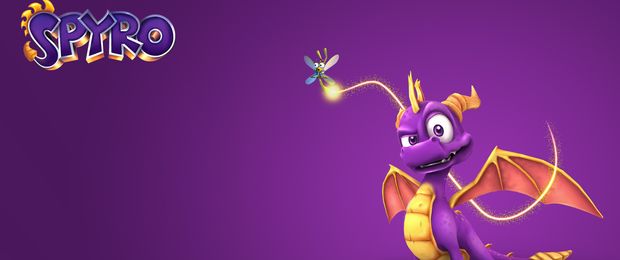Retrospective: Spyro Series
With the recent success of games such as Halo 4 and Assassins Creed, my mind was cast back to my personal favourite childhood games: Spyro: Gateway to Glimmer and Spyro: Year of the Dragon. Games such as the newly released Halo 4 have generated massive advertising campaigns, and their success financially has been matched by the enthusiasm with which the gaming community have received them. In comparison to the sophistication of these twenty-first century games, a celebration of a more retro game such as Spyro may seem bizarre, however, I maintain that there are aspects of Spyro that still deserve acclaim.
The first thing that strikes me about Spyro, is the creativity that went into its imagination and production. Inventive, rich and colourful, the artistry of Spyro is markedly different from the industrialised and war scenes depicted in today’s most popular games such as _Call of Duty. Those who played Spyro would be shown almost every possible type of landscape from volcanoes and deserts to underwater planets to frozen, ice covered worlds. Each scene is animated with colour and detail that may not be able to match the graphics of today yet still vividly creates fantastical and exciting visual displays.
The diversity of worlds and possibilities within the game are another triumph of Spyro that is not lost when compared with games of today. Not only are there three or four separate, themed worlds in each of these two Spyro games, but within these worlds there are at least ten different portals to wildly varied worlds. More than this the gamer is challenged by further time trials and alternative portals where you are able to adopt the persona of Sparx, Sheila the kangaroo, Sgt. Byrd, Bentley the Yet, and Agent 9. Even by listing the names it is possible to see the diversity of the challenges you face when playing this game, not to mention the fun. You are introduced to characters such a Sparx during the first worlds of the game, with no knowledge that later on you will get the opportunity to adopt his persona and experience the game from a completely different perspective. This further adds drama and excitement to the game as a whole.
Not only do the settings progress as the game develops, but the skill set of Spyro is added to, opening up a further set of opportunities in each of the worlds and portals. The acquisition of skills such as climbing a ladder, swimming, head butting and hovering provides yet another diverse aspect to a seemingly one-dimensional game. Although these skills may seem trivial and simplistic at first glance, especially compared to the advance technical ability of today’s gaming protagonists, this doesn’t detract from the added entertainment they give to the game. As these skills are unlocked throughout the course of the game, just when you may think the end of the narrative is complete, a new array of challenges is opened up -this means that the narrative is not entirely linear. You do not simply complete one level entirely then move on to the other, you must return to worlds and portals, search out missing orbs or eggs before being able to complete the game. This added complexity, I would argue, allows it to stand the test of time. Despite the fact that playing it aged 19 as opposed to 10 did take away some of the difficulty and mystery, Spyro nonetheless was exciting and I was surprised by levels I hadn’t remembered existed or hadn’t been able to discover.
Whilst the character development of modern protagonists such as Master Chief is detailed and have psychological depth, in Spyro the gamer is able to develop relationships with a key cast of fantastical creatures. Spyro may not have the same romantic attachments or psychological depth, but his journey throughout these two games and the franchise as a whole still manages to create an intimate relationship with the gamer, as we see the youthful Spyro face challenges and progress into the leader of his dragon nation.
It’s true that Spyro lacks the sophistication, online opportunities and quite spectacular graphics of first-person gaming; however, the creativity, diversity and simply great (if a little ridiculous) fun that I had playing Spyro in my childhood surely cannot really be matched by the monochrome shooting games I’m surrounded by today – just imagine how entertaining Spyro would be if it did have all those things.

Comments (2)
obviously like your website however, you must check out the punctuation in many of the articles you write. Some of options rife using transliteration difficulties and i also to locate that incredibly frustrating to tell the truth however I’ll undoubtedly occur once again yet again.